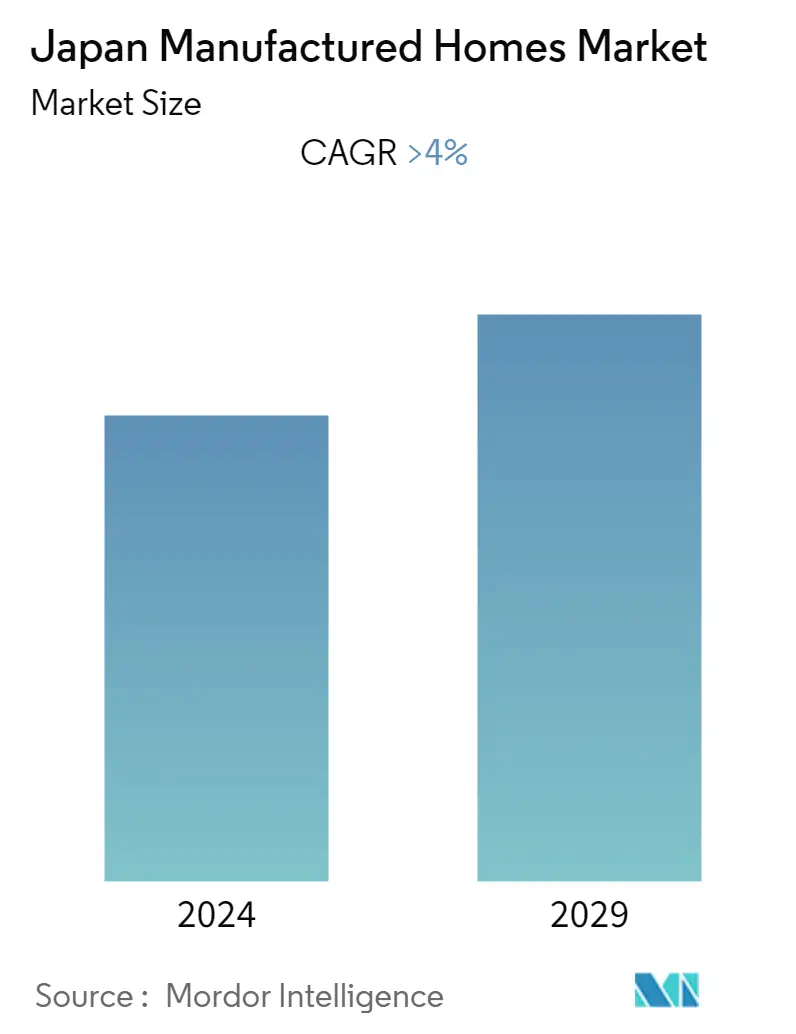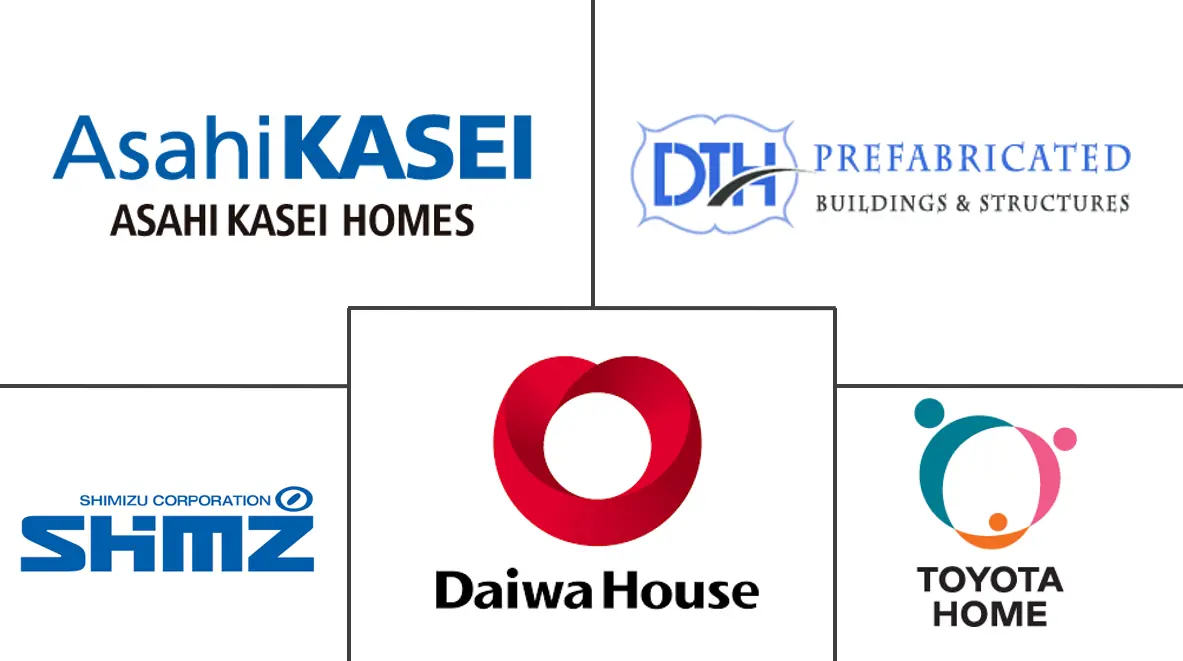Market Size of Japan Manufactured Homes Industry

| Study Period | 2020 - 2029 |
| Base Year For Estimation | 2023 |
| Forecast Data Period | 2024 - 2029 |
| Historical Data Period | 2020 - 2022 |
| CAGR | 4.00 % |
| Market Concentration | Low |
Major Players
*Disclaimer: Major Players sorted in no particular order |
Japan Manufactured Homes Market Analysis
The size of Japan manufactured homes market is USD 4.3 billion in the current year and is anticipated to register a CAGR of over 4% during the forecast period.
- COVID-19 slightly impacted the manufactured homes market in Japan. Due to COVID-19 restrictions, many construction projects were delayed or canceled. In addition, the pandemic disrupted all manufacturing supply chains, but that did not last long. Moreover, the pandemic resulted in a labor and building materials shortage, leading to increased construction costs by 5% to 10%. After easing restrictions, the construction of manufactured homes witnessed significant growth.
- Moreover, Japan's manufactured housing industry is leading in terms of innovation, with efficient production processes, targeted marketing strategies and consumer outreach, and high-quality designs that offer variability and flexibility at affordable prices. In addition, manufactured home developers provide a fully computerized system to their clients to offer customized homes with standardized components.
- Meanwhile, the Japanese prefer factory-manufactured houses when compared to conventionally built ones. However, Japan's population is declining and is expected to decrease by nearly 40 million by 2065. In addition, the country also has an aging population, with more than one-third of people in Japan will be over the age of 65 in the coming years. These factors are causing an above-average number of homes to be vacant. Furthermore, the low life cycle of Japanese homes is driving the manufactured homes industry in the country.
Japan Manufactured Homes Industry Segmentation
The manufactured homes, sometimes also called mobile homes, are constructed offsite, and once the entire structure is completed, the final product is transported to the desired location. The offsite works also include plumbing works, electrical works, installing the air conditioners, wiring, etc.
A complete background analysis of the Japan Manufactured Homes Market, including the assessment of the economy and contribution of sectors in the economy, market overview, market size estimation for key segments, and emerging trends in the market segments, market dynamics, and geographical trends, and COVID-19 impact is covered in the report. Japan Manufactured Homes Market is Segmented by Type (Single Family and Multiple Family). The report offers market size and forecasts in value (USD billion) for all the above segments.
| By Type | |
| Single Family | |
| Multi Family |
Japan Manufactured Homes Market Size Summary
The Japan manufactured homes market is experiencing a steady growth trajectory, driven by innovative production processes and a consumer-oriented approach. The industry has adapted to challenges posed by the COVID-19 pandemic, which initially caused delays and increased costs due to supply chain disruptions and labor shortages. However, the market rebounded as restrictions eased, with manufacturers leveraging advanced marketing strategies and high-quality designs to attract consumers. The preference for factory-manufactured homes over traditional construction methods is growing, partly due to Japan's declining and aging population, which has led to an increase in vacant homes and a demand for more efficient housing solutions. The low life cycle of homes in Japan further propels the adoption of manufactured homes as a viable alternative to conventional structures.
The market is characterized by a competitive landscape with numerous players striving to enhance their offerings to meet evolving consumer needs. The use of wood in construction remains prevalent, although rising timber prices and geopolitical tensions have impacted material costs, prompting a shift towards manufactured homes. The trend of home renovation and the adoption of prefab panels as a cost-effective solution for aging structures are also contributing to market growth. Despite challenges such as soaring construction material prices, the manufactured homes market in Japan is poised for continued expansion, supported by strategic acquisitions and diversification efforts by key industry players.
Japan Manufactured Homes Market Size - Table of Contents
-
1. MARKET INSIGHTS
-
1.1 Current Market Scenario
-
1.2 Supply Chain / Value Chain Analysis
-
1.3 Technological Innovations in the Manufactured Homes Market
-
1.4 Government Regulations and Initiatives in the Industry
-
1.5 Insights into Manufactured House Costs
-
1.6 Impact of COVID-19 on the Market
-
-
2. MARKET SEGMENTATION
-
2.1 By Type
-
2.1.1 Single Family
-
2.1.2 Multi Family
-
-
Japan Manufactured Homes Market Size FAQs
What is the current Japan Manufactured Homes Market size?
The Japan Manufactured Homes Market is projected to register a CAGR of greater than 4% during the forecast period (2024-2029)
Who are the key players in Japan Manufactured Homes Market?
Daiwa House Group, TOYOTA HOUSING CORPORATION, SHIMIZU CORPORATION, Asahi Kasei Homes Corporation and DTH Prefab are the major companies operating in the Japan Manufactured Homes Market.

